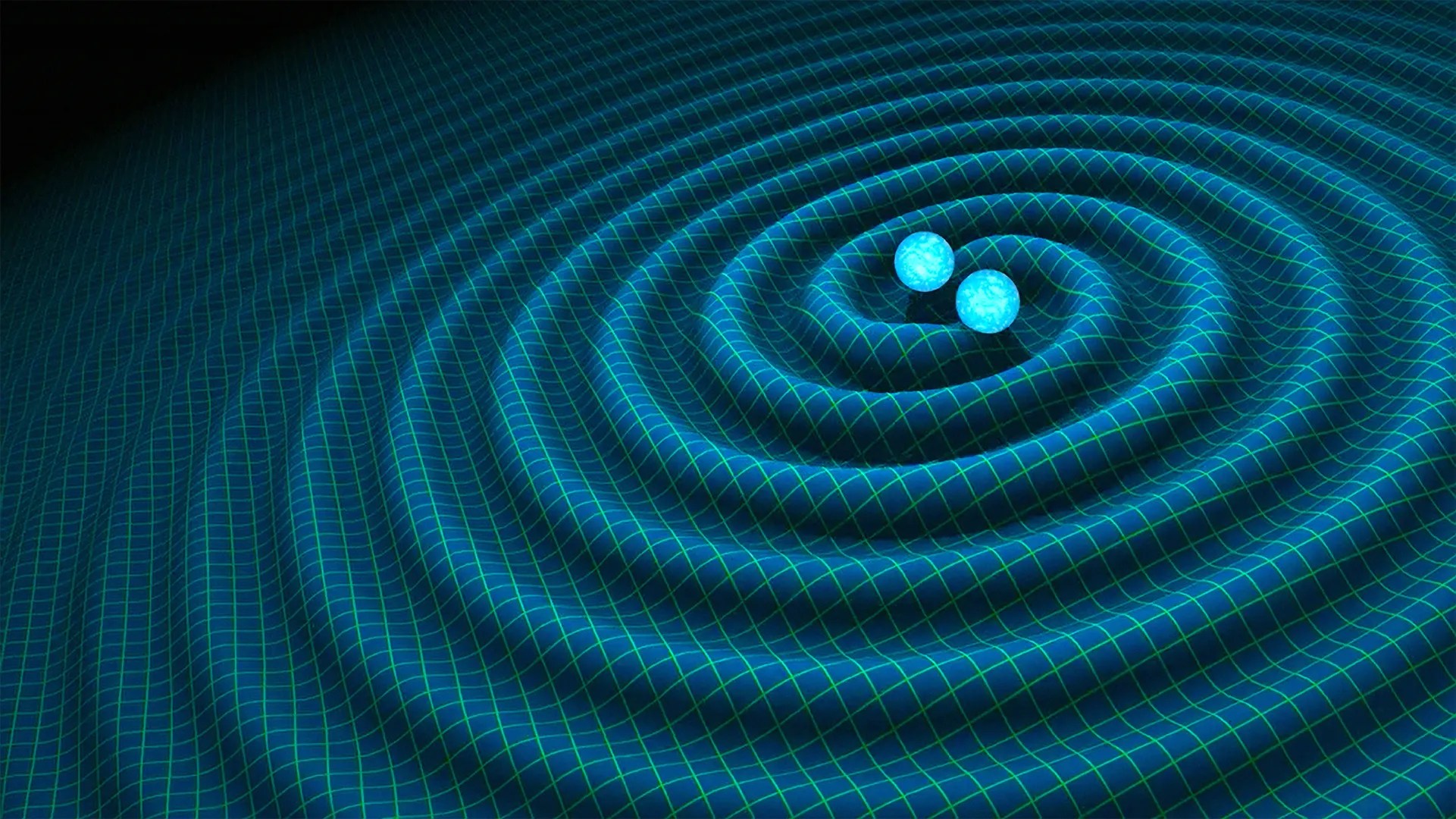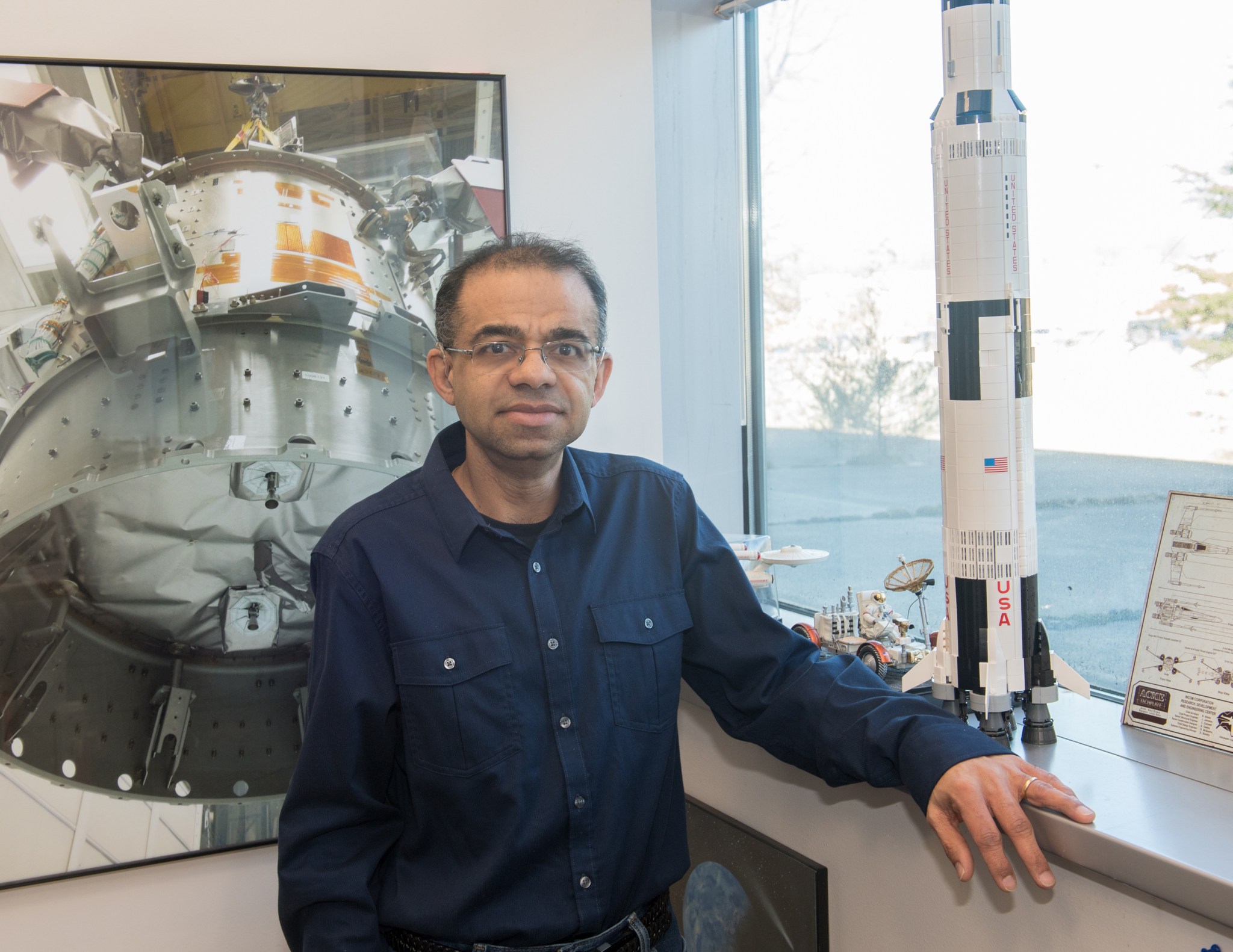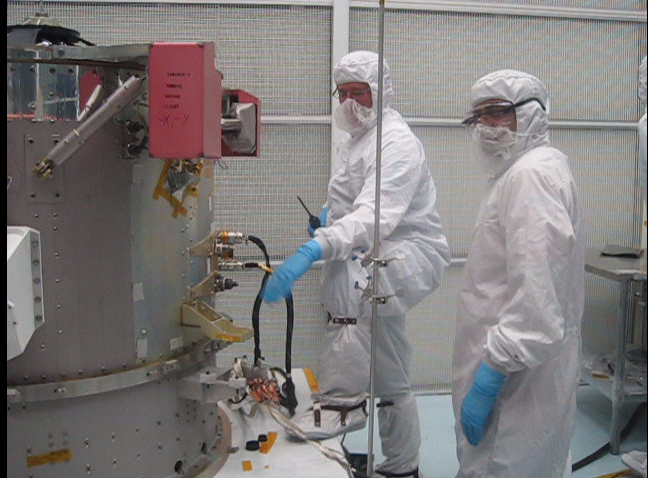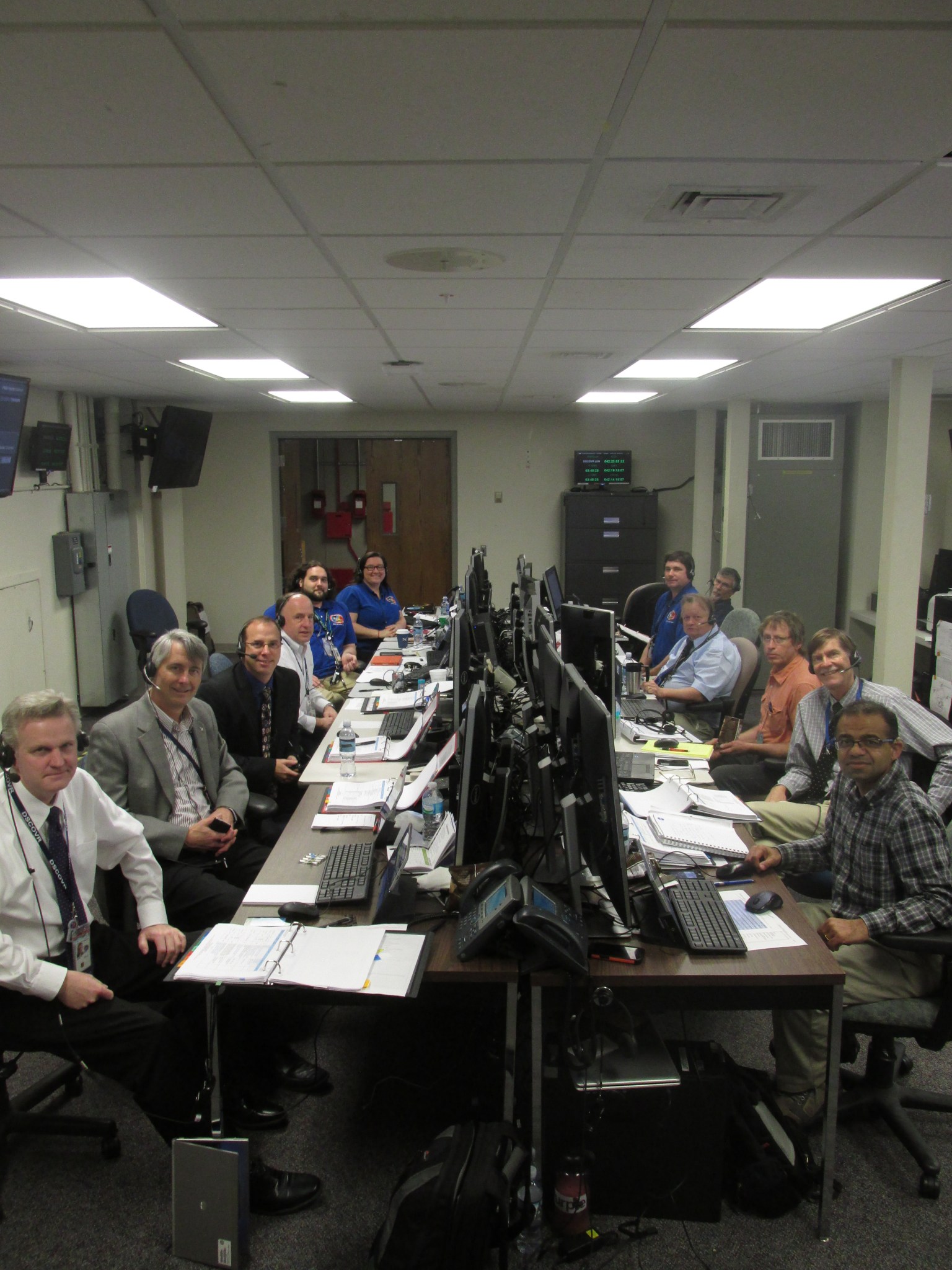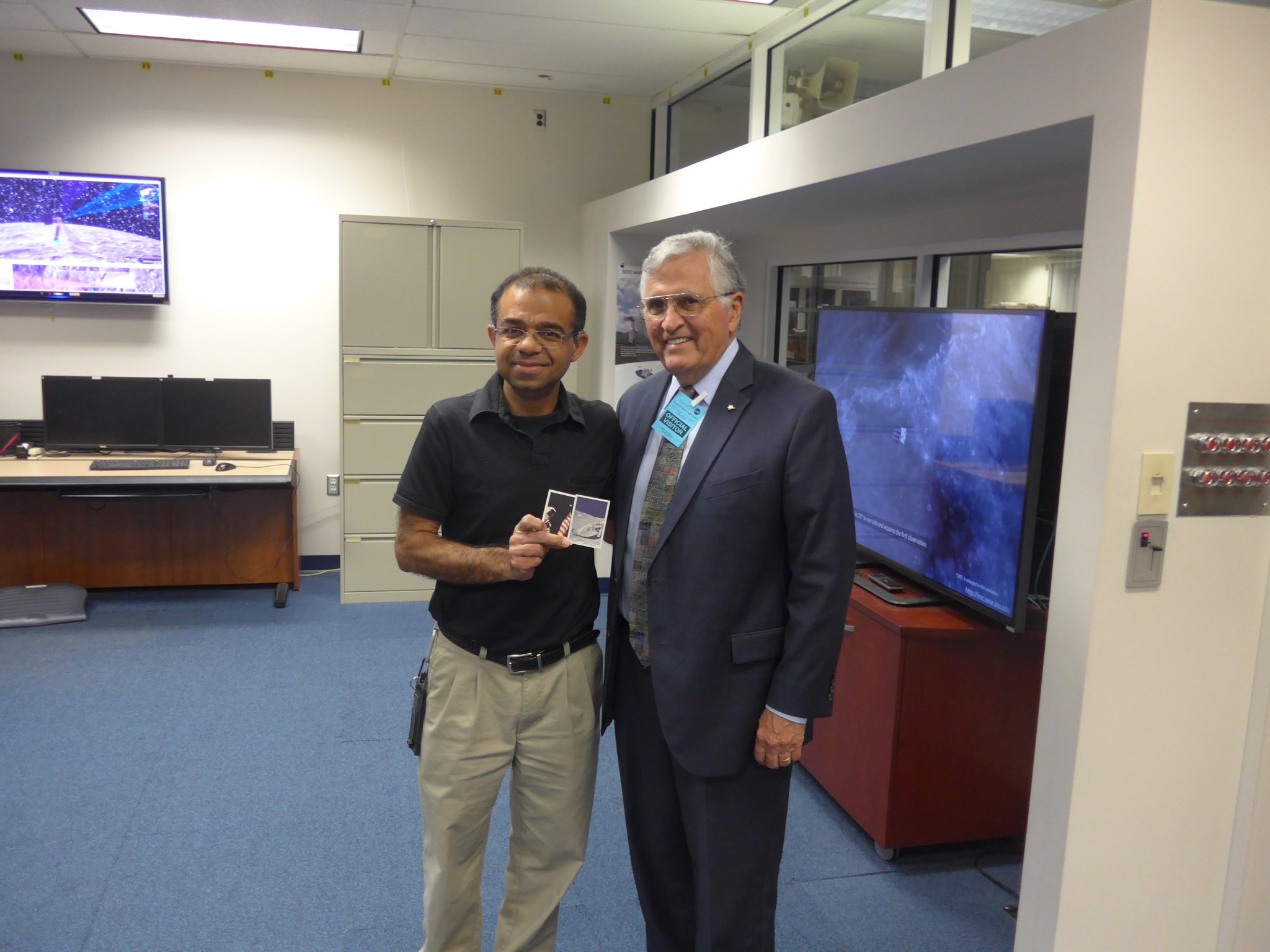Name: Apurva P. Varia
Titles: Mission Director for Parker Solar Probe, Mission Director for the Interstellar Boundary Explorer (IBEX), and Deputy Mission Director for the Lunar Reconnaissance Mission (LRO)
Formal Job Classification: Aerospace engineer
Organization: Code 584, Mission Validation and Operations Branch, Engineering and Technology Directorate
What do you do and what is most interesting about your role here at Goddard? How do you help support Goddard’s mission?
As a mission director, my responsibilities involve making sure that the spacecraft runs in an efficient and safe manner; monitoring the health and safety of the spacecraft for the life of the spacecraft; and ensuring that the data collected by the spacecraft is distributed to the scientific community, which is our overarching goal. Additionally, the mission director interacts with everyone including the flight operations teams, the project office, the financial people and the project scientists on daily basis.
What is really interesting about being a mission director is that we deal with so many things. We have to prepare for the unexpected because we never know if or when the spacecraft is going to have an anomaly. We must be prepared 24/7 for emergencies. Our flight operations team is the key to everything. They monitor the spacecraft 24/7 and prepare for all kinds of emergencies with contingency plans including for most of the subsystems.
Our missions are really cool because we are exploring the unknown. There are so many things going on that we don’t know about, that we want to explore and learn about. We are trying to learn more about the unknown, about what is out there in space.
What is most interesting about your work as mission director of Parker Solar Probe?
I recently became the mission director for the Parker Solar Probe. The mission’s goals are to understand why the solar corona is hotter than on the surface and what causes the solar wind to accelerate. I think the most interesting aspect about my work is the challenge of ensuring that the observatory survives its flight through the Sun’s corona. We work with the Johns Hopkins University Applied Physics Laboratory to ensure that the observatory performs as expected while going through the Sun’s corona 24 times over 7 years.
What was most interesting about your work as the former Mission Director of Wind?
Wind, which launched in 1994, is a mission to study the solar wind and has several instruments. The interesting thing about WIND is it has analog tape recorders like those used in portable cassette players. Wind’s are still working some 25 years later.
As Mission Director for IBEX, what do you find most interesting?
IBEX is a mission that studies the edge of our solar system where there is a boundary with the interstellar medium. The Sun emits a solar wind in all directions and that solar wind has blown a bubble in space that we call the heliosphere. This edge moves and changes as the Sun moves and changes, just as a beach is always changing due to tides and waves. We are trying to understand the structure of this boundary between the ocean and the land. The neat thing about IBEX is that it is essentially taking pictures of this boundary with particles, not light. Because of these special but difficult to measure particles, we can study this beach that is more than 10 billion miles away, from Earth orbit.
What do you find most interesting as deputy mission director of LRO?
The Lunar Reconnaissance Orbiter, LRO, launched in 2009, is a very high-visibility mission for Goddard and for NASA especially since the administration announced the initiative to return humans to the Moon with the Artemis project. Currently in a lunar orbit, the main purpose of LRO is to image measure the lunar surface that will be used to support the future robotics lander and human exploration. In addition, LRO continues to provide the data that determines how to survive and operate there. This is an exciting time for LRO to be involved in an important initiative.
As a deputy mission director for LRO, I support the mission director and Space Science Mission Operation (SSMO) project manager in whatever they require. My main duties are making sure that the ground systems are working efficiently as, for example, ensuring that the ground system upgrades are fully tested before putting them in operations. Also, we help manage the team and monitor routine and critical maneuvers. Another aspect of my duties is evaluating trending data of telemetry for the subsystems over time for any possible anomaly.
I definitely have a great sense of pride in the entire LRO team, which really puts in the effort to make it work. We actually have a variety of teams, from scientists and engineers to financial people, and everyone works together to ensure the mission success.
Why did you become an engineer?
When I was in ninth grade, I was watching television, flipping through channels. I saw the space shuttle on the launch pad. I did not actually know what it was at the time. I saw the countdown timer counting down. Ten…three, two, one, liftoff! It was exciting! Everyone celebrated when it launched. In that moment, I decided I wanted to become an astronaut. I even wrote a letter to NASA’s Johnson Space Center in Houston asking if they would ever accept deaf astronauts. They responded that they would take that in consideration in the future. Still, I was not deterred from following my dream.
What did you do to follow your dream?
In college, I decided to become an aerospace engineer to bring me closer to my dream of being in space. While I was in college, I had a summer internship at Goddard. The following year, I had another summer internship at NASA’s Langley Research Center in Hampton, Virginia. These internships fine-tuned my interest in NASA, I just had to decide which center I preferred. What I like about Goddard is that this is where they build spacecraft and work on developing technology. I also like the people here.
What positions have you held at Goddard?
In 2002, I joined Goddard as a propulsion engineer. I remained in this role for a number of years until I decided that I was ready for a more significant challenge.
Around 2014, I saw an ad for mission director positions. I had watched the movie “Apollo 13,” which focused a lot on how the flight director facilitated the team, was such an important part of the team and essentially saved the mission. I had seen several films about the Apollo missions. That is one of the reasons why I wanted to become a mission director.
How have you achieved your dream?
Since I was not able to be an astronaut, I do the next best thing by working on the flight hardware that actually go to space. I feel proud because spacecraft discover the unknown, seeking life out there in the universe and beyond.
I feel the closest that I can to the universe without being in it. But I feel like I can almost touch it!
Is flexibility key to achieving a dream?
Yes. You can’t have everything you want, but you can be as close as you can be and still be happy. This same flexibility is key for being a successful mission director. I used to be very rigid, and being a mission director has taught me that flexibility is key. You cannot always agree on everything, so you have to compromise and make the best decision you can and move on.
There are always changes, whether it is in your career or in your life. You have to accept change, keep moving and be happy.
Have you ever met an astronaut?
Two! I met Neil Armstrong for Apollo 11’s 40th anniversary event at the National Air and Space Museum. I got to shake his hand and talked to him, briefly. It was awesome! What more can I say!
I also met Jack Schmitt, an Apollo 17 geologist, after a speech he gave at Goddard. I got to shake his hand and talked to him, also briefly. It was so cool! He uses the LRO data for his research.
How has Goddard been inclusive of people who are deaf?
Goddard has a large, very welcoming deaf community. I came here in part because I am able to socialize with this deaf community.
Goddard has various committees that provide knowledge about and support disabilities, including deafness. Goddard supports the deaf community by, for example, providing sign language interpreters and offering sign language classes to initialize communications with the deaf. We also celebrate National Disability Month in October.
Do you have a mentor or are you a mentor? If so, please tell us the most important advice you gave or learned?
I have few great mentors such Mark Fiebig, Caitlin Bacha, Lou Parkinson, and Bill Yuknis. One of the most important things they have told me is don’t be afraid of failure and do it better next time. Also, pick your battles and let go other minor things.
I have also mentored summer interns. I always tell them to learn as much as they can about effective written and verbal communication because communication can help reduce a lot of misunderstandings and mistakes.
Who is the most inspiring person in your life?
My mother. She made me study hard, especially in high school and college. It is harder for a deaf person to be successful so she made me work harder. She made me read books and newspapers to constantly learn about a lot of things.
I want to say thank you to my mother for her continuing dedication and patience with me. She made me become a successful person and allowed me to accomplish my dream.
What is the coolest thing you’ve ever done as part of your job at Goddard?
I believe that I am the first deaf mission director for an uncrewed mission. I encourage anyone with disabilities to pursue their dreams. You are going to face challenges. Remember, you can overcome challenges with the support of your colleagues, mentors and peers.
What is your “six-word memoir?” A six-word memoir describes something in just six words.
Be curious and ask a lot of questions.
By Elizabeth M. Jarrell
NASA Goddard Space Flight Center














